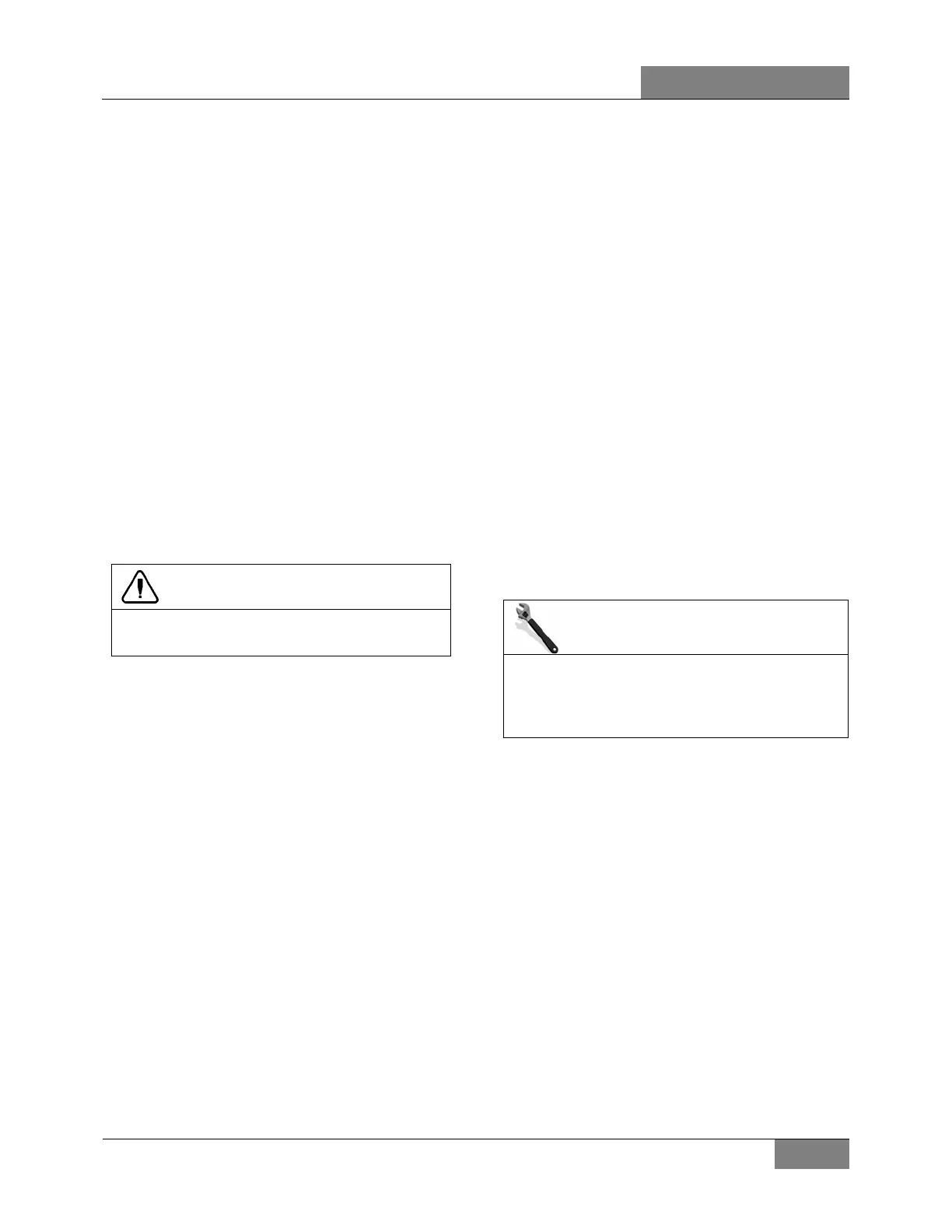DOB 1300-1556 | X3-45 Commuter PA-1648 Maintenance Manual First release Oct 2020
13 STEERING SYSTEM MAINTENANCE
The power steering system requires little
maintenance. However, the system should be
kept clean to ensure maximum operating
performance and trouble-free service. Periodic
inspections should also be made to check for
leakage and all parts for damage or distortion.
When the slightest evidence of dirt, sludge or
water is discovered in the system, disconnect
fluid lines at the power steering gear to drain the
system. Drain and refill the system with
appropriate power steering fluid.
Air in the hydraulic system will cause spongy
action and noisy operation. When a hose has
been disconnected or when fluid has been lost
for any reason, the system must be bled. Bleed
system as outlined under paragraph 0:
"BLEEDING POWER STEERING HYDRAULIC
SYSTEM".
CAUTION
Do not operate the pump without fluid in the
power steering fluid tank.
If the steering linkage between the steering gear
and the two front wheels is not properly
adjusted, or if it is bent, twisted or worn, the
steering of the vehicle will be seriously impaired.
Whenever a steering linkage part is repaired,
replaced or adjusted, steering geometry and
front wheel alignment must be checked and
necessary corrections made. Refer to section 10
"FRONT AXLE" under heading 6: "FRONT
WHEEL ALIGNMENT".
At regular lubrication intervals, the steering
linkage should be thoroughly inspected for worn
or loose components.
After the vehicle has been operated continually
and high mileage figures have been reached,
overhaul of the various steering units will be
required. General overhaul procedure normally
requires removal of the entire assembly,
cleaning and inspection of all parts and final
assembly. Careful inspection of all parts during
overhaul is very important and must not be
neglected.
Lubrication fittings must all be cleaned before
applying lubricant. Moreover, always be sure the
equipment used in applying lubricant is clean.
Every precaution should be taken to prevent
entry of dirt, grit, lint or other foreign matter into
lubricant containers. Replace fittings that have
become broken or damaged. Lubrication
intervals, as well as the recommended lubricants
for the steering components, are given in the
"LUBRICATION AND SERVICING SCHEDULE"
in Section 24A of this manual. The intervals
given in the schedule are recommended for
normal service. More frequent intervals may be
required under severe operating conditions.
13.1 POWER STEERING FLUID CONDITION
The power steering fluid tank is filled with
Automatic Transmission Fluid (ATF) (refer to
FLUIDS & LUBRICANTS TABLE in Section
24A: Lubrication & Servicing). A periodic power
steering fluid change is not required. Change
the power steering fluid only if the steering gear
unit was repaired, replaced or if the visual
inspection of the fluid shows that a change is
necessary.
MAINTENANCE
Check power steering fluid condition at the
intervals specified by the Lubrication And
Servicing Schedule in Section 24A:
LUBRICATION & SERVICING
13.1.1 Power Steering Fluid Visual
Inspection
The color of the power steering fluid can give
you an idea of the fluid’s condition and tell you
that it needs to be changed. ATF gets darker
with age, this process doesn’t necessarily
indicate a problem. If the fluid has darkened
significantly, it may indicate that the power
steering system is running hotter than normal
and the fluid is overheating. Troubleshoot the
overheating and have the fluid changed.
Get a sample of power steering fluid using the
gauge located on top of the tank. Wipe it on a
clean white rag. Check the fluid color, smell and
consistency. Use the color chart below to
determine if the power steering fluid needs to be
changed.

